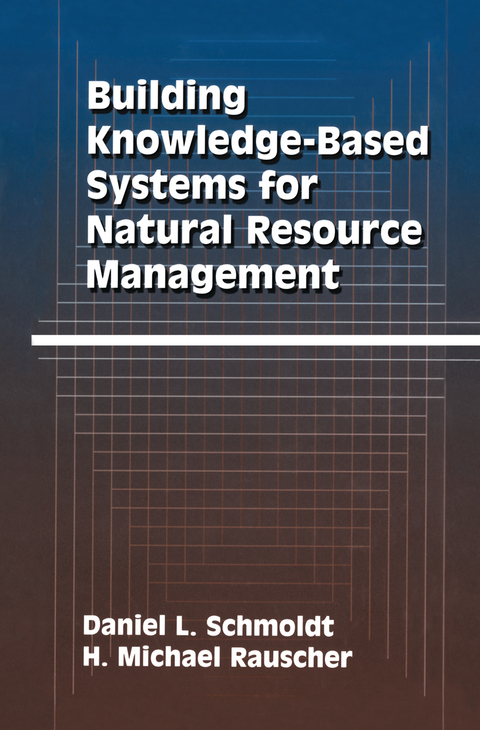
Building Knowledge-Based Systems for Natural Resource Management
Springer-Verlag New York Inc.
978-1-4612-8489-5 (ISBN)
If one were forced to use a single key word to describe the decade of the 1980's, a very prominent one would be "technology. " Leading the forefront of tech nology advancement were breakthroughs in electronics. Devices that were uncommon or unknown in 1980 became commonplace, and almost indispens able, by 1989. This trend has continued into the 1990's and it does not seem to be abating in any way. Microwave ovens, video recorders, telephone answer ing machines, compact disc players, computers, and a host of smaller or less sophisticated devices now appear in most households. The development of small and inexpensive computers, i. e. , personal computers, has placed computing resources within reach of many more people. In addition, many traditional, and largely mechanical devices, have been enhanced by electronics. For example, specialized microprocessors are combined with arrays of electronic sensors to control and monitor sophisticated engineering components in most new auto mobiles. In this and many other ways, we are touched by the new electronics in almost every aspect of our daily lives. Initially, personal computers were little more than toys. They contained only a small fraction of the computing power of their immediate ancestors, the mini computers and mainframe computers. However, rapid improvements in integ rated circuit design and chip manufacture produced regular reductions in size and cost of computer components. During the same time, processor speed and sophistication increased.
1 AI and Natural Resource Management.- 1.1 Natural Resources.- 1.2 Resource Management.- 1.3 Knowledge: A Historical Framework.- 1.4 Artificial Intelligence.- 1.5 Knowledge-Based Systems.- 1.6 Some Potential Benefits of Knowledge-Based Systems.- 1.7 Limitations of Knowledge-Based Systems.- 1.8 Suitable Application Areas.- 1.9 Summary.- 2 Knowledge-Based Systems: Representation and Search.- 2.1 An Overview of KBS Organization.- 2.2 The Knowledge Base and Knowledge Representation.- 2.3 Working Memory.- 2.4 Search: Inference and Control.- 2.5 Knowledge-Based System Architectures.- 2.6 Summary and Additional Readings.- 3 Other Knowledge System Components.- 3.1 Explanation and Justification.- 3.2 User Interface.- 3.3 Learning Capabilities.- 3.4 Interfacing to Conventional Programs and Data Files.- 3.5 Inexact Reasoning and Uncertainty.- 3.6 Summary and Additional Readings.- 4 Planning the Application.- 4.1 Parallelism and Cycling in the Development Process.- 4.2 Alternative Development Methods.- 4.3 Problem Definition.- 4.4 Summary.- 5 Knowledge Acquisition.- 5.1 Knowledge Acquisition in Overview.- 5.2 Surface Versus Deep Knowledge.- 5.3 Knowledge Acquisition Strategies.- 5.4 Creating a Domain Ontology.- 5.5 Acquisition Methods.- 5.6 Domain Ontology and Acquisition Methods.- 5.7 Knowledge Acquisition Scenarios.- 5.8 Knowledge Acquisition Guidelines.- 5.9 Expert Biases and Eliciting Uncertain Knowledge.- 5.10 Summary and Additional Readings.- 6 Designing the Application.- 6.1 Application Design = Knowledge Model + Human Factors Model.- 6.2 Pre-Implementation Topics.- 6.3 Prototyping.- 6.4 Summary.- 7 Programming Knowledge Systems in Prolog.- 7.1 Why Prolog?.- 7.2 Introduction to Prolog.- 7.3 Summary and Additional Readings.- 8 An Initial Prototype Using Native PROLOG.- 8.1 Knowledge-Based System Architecture.- 8.2 The Domain Level.- 8.3 The Tactical Control Level.- 8.4 System Control Level.- 8.5 Putting It All Together.- 8.6 From Native Prolog to Meta-PROLOG Programming.- 8.7 Summary.- 9 A PROLOG Toolkit Approach to Developing Forest Management Knowledge-Based Systems.- 9.1 A KBS Toolkit.- 9.2 DSSTOOLS System Architecture.- 9.3 Domain Level.- 9.4 Tactical Control Level.- 9.5 System Control Level.- 9.6 Summary.- 10 System Evaluation and Delivery.- 10.1 System Evaluation.- 10.2 Delivery.- 10.3 Summary.- Appendix A Roots of Artificial Intelligence.- A.1 A Definition of Artificial Intelligence.- A.2 Dreams of Intelligent Artifacts.- A.2.1 Ancient Dreams.- A.2.2 Modern Nightmares.- A.3 Realization.- A.3.1 Realize What?.- A.3.2 Mind as a Tool.- A.4 Knowledge.- A.4.1 Group Knowledge.- A.4.2 Hierarchical Structure.- A.4.3 Chunks.- A.4.4 Representation of Chunks.- A.4.4.1 Frames and Semantic Networks.- A.4.4.2 State Space.- A.4.4.3 Artificial Neural Networks.- A.4.4.4 Rules.- A.4.4.5 Threaded Chunks.- A.5 Goals.- A.6 Reaching the Goal.- A.6.1 Generate-and-Test.- A.6.2 Goal Reduction.- A.6.3 State-Space Search.- A.6.4 Genetic Algorithms and Emergent Behavior.- A.7 Interfacing, or Conversing with the Statue.- A.8 Testing and Conclusion.- Biliography.
| Zusatzinfo | XXII, 386 p. |
|---|---|
| Verlagsort | New York, NY |
| Sprache | englisch |
| Maße | 155 x 235 mm |
| Themenwelt | Sachbuch/Ratgeber ► Natur / Technik ► Natur / Ökologie |
| Sachbuch/Ratgeber ► Natur / Technik ► Naturführer | |
| Informatik ► Theorie / Studium ► Künstliche Intelligenz / Robotik | |
| Naturwissenschaften ► Biologie ► Ökologie / Naturschutz | |
| Technik ► Bauwesen | |
| Technik ► Umwelttechnik / Biotechnologie | |
| Weitere Fachgebiete ► Land- / Forstwirtschaft / Fischerei | |
| ISBN-10 | 1-4612-8489-9 / 1461284899 |
| ISBN-13 | 978-1-4612-8489-5 / 9781461284895 |
| Zustand | Neuware |
| Haben Sie eine Frage zum Produkt? |
aus dem Bereich


